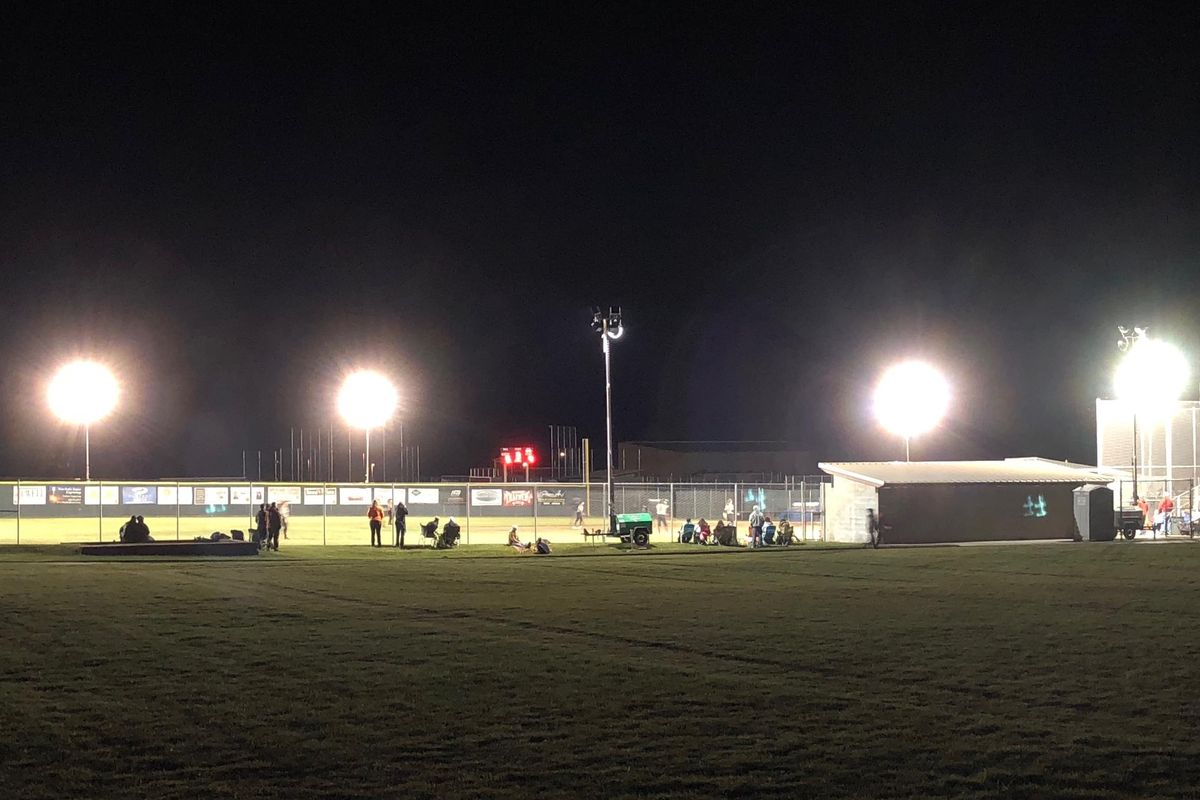Greater Spokane League spearheads effort to sanction slowpitch softball

“It will mess up my daughter’s swing.”
Ken VanSickle hears that all the time. But the University High athletic director and Greater Spokane League softball coordinator – for fastpitch and slowpitch – begs to differ.
He said it’s a “myth” that slowpitch messes up fastpitch swing.
“It’s all the same swing,” VanSickle said.
VanSickle has been a champion for slowpitch in this area and around the state since the GSL adopted it as a fall sport 12 years ago.
Originally picked up as a way to balance out football as part of the Title IX initiative, slowpitch has taken on a life of its own, with more girls finding it a way to participate on a school team that might not have otherwise.
“When you have over 100 kids maybe turn out for football,” VanSickle said, “this was adding anywhere between 30-40 extra girls playing.
“We’re getting a lot of kids out. We have a lot of (slowpitch) girls that play select, and play fastpitch. We also get a lot of girls that don’t play fastpitch, that just want to be involved with the school and want to come out to play. And it’s catching on throughout the state.”
VanSickle said that since slowpitch isn’t sanctioned by the Washington Interscholastic Athletic Association (WIAA), tryouts come later after cuts are made from the sanctioned fall sports.
“We wait until school starts so that we don’t want to take kids away from volleyball or cross country,” he said. “We want them to turn out for those teams. Then we’ll turn out for slowpitch. Maybe if a kid gets cut from volleyball, she’ll come play slowpitch and be a part of a school team.”
But VanSickle sees a day when slowpitch will have its day in the sun.
This year, for the first time in the state, the top four teams from the GSL and the Greater St. Helens League will gather for a state tournament in Richland. It won’t be sanctioned by the WIAA, but the state’s organizing body supports the idea, according to VanSickle, and will monitor the attention the tournament gets.
“Hopefully, it goes well and the ADs like what they see,” University coach Jon Schuh said.
VanSickle said slowpitch is quickly gaining momentum across the state.
“The Greater St. Helens League down around Vancouver added it about four or five years ago and they talked and said, ‘Hey, let’s get together because we don’t know where we’re at. We play within our league, let’s see where we’re at,’” he said. “So we actually talked to the WIAA and though it’s not a WIAA sanctioned event, WIAA was supportive of what we’re doing. Now, the Big 9, about half their teams have started, the KingCo League over in Seattle has started.”
Slowpitch still has some work to do to gain sanctioning. VanSickle is leading the charge.
“Since we’ve been doing it the longest, I think we’re the ones trying to spearhead it,” he said.
“It’s starting to take off and I can see in the next maybe three-to-five years where we’ll actually see it sanctioned by the WIAA. We’ll actually see a WIAA state (slowpitch) softball tournament. But we gotta get the ball rolling.”
VanSickle said the most important factor in getting the sport sanction is simple: participation.
“They’re going to want to see more leagues added and generate more interest and I can see the WIAA saying, ‘We’ll sanction the fall slowpitch leagues,’ which I think will get even more folks involved.”
There are a couple of key differences between slowpitch and fastpitch – beside the obvious. The rubber in slowpitch is at 46 feet, 3 feet deeper than fastpitch. There’s no bunting or stealing, and there are a lot more balls in play.
“They have to play defense all the time,” VanSickle said.
Whereas in fastpitch a dominant pitcher might have 10-12 strikeouts, almost every slowpitch batter puts the ball in play.
One of the things VanSickle has done to try to draw more attention to slowpitch is University’s annual “Fall Ball Brawl,” a night game in which U-Hi sets up temporary lighting at its softball field and sets up an attractive matchup – usually against league rival Central Valley.
“It’s something we started about eight years ago,’ VanSickle said. “We just thought to draw more interest to the sport, get more people involved, show them what slowpitch is all about, we said let’s do somewhat of a highlight game and have a game between U-Hi and Central Valley.”
The generators for the lighting are loud. The crowd – bleachers filled with a couple of hundred students and family members on Tuesday, responded in kind, cheering, hooting and hollering at every opportunity – despite temperatures in the 40s, more football weather than softball.
“It’s a great event for our community,” VanSickle said.
Unfortunately for U-Hi, the ball didn’t bounce its way in the annual game this year. Even though the Titans had wrapped up the regular-season league title, Central Valley showed it’s not a pushover and issued the Titans’ first loss of the season. Kiara Morse went 3 for 4 with two doubles and Jordan Williams added two hits, including an RBI triple, and CV (18-2) beat U-Hi (19-1) 9-5.
It won’t take long for U-Hi to seek revenge. The district playoffs start Thursday, and top seeds U-Hi and CV play first-round winners on Monday in the semifinals. The title game is on Tuesday at 4 p.m.